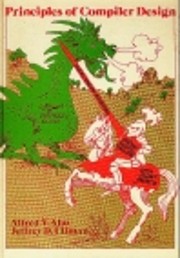

Cliquer sur une vignette pour aller sur Google Books.
|
Chargement... PRINCIPLES OF COMPILER DESIGN (1977)par Alfred V. Aho, Jeffrey D. Ullman
 Aucun Actuellement, il n'y a pas de discussions au sujet de ce livre. aucune critique | ajouter une critique
Appartient à la série éditoriale
Aucune description trouvée dans une bibliothèque |
Discussion en coursAucunCouvertures populaires
 Google Books — Chargement... Google Books — Chargement...GenresClassification décimale de Melvil (CDD)001.6425Information Computing and Information Knowledge [formerly : Data processing] [formerly : Electronic] [formerly : Computer programs and programming] [formerly : Software & its use]Classification de la Bibliothèque du CongrèsÉvaluationMoyenne: (3.77) (3.77)
Est-ce vous ?Devenez un(e) auteur LibraryThing. |
|||||||||||||||||||||||||||||||||||||||||||||||||||||||||||||||||||||||||||||||||||||||||||||||||||||||
Standardlærebogen i compilerdesign, dvs hvordan man skriver en oversætter til et højniveausprog.
I 1981 skrev Michael Schwartzbach en oversætter fra Aka til Pascal og jeg skrev runtimebiblioteket. I 1982 skrev Michael en oversætter til mellemkode og jeg skrev fortolkeren af A-kode. Michael var på vej til USA, så han skrev compileren først. Så skrev jeg fortolkeren og en seddel med underligheder i oversætteren, så da han kom tilbage fra USA gik der et par dage med at rette og så virkede systemet ellers fint i flere år. En af superbrugerne var instruktoren Per Frederik Vilhelm Hasle Harlung, som blandt andet fandt en memory leak. Gad vide om ikke vi kiggede lidt i den her bog undervejs? (